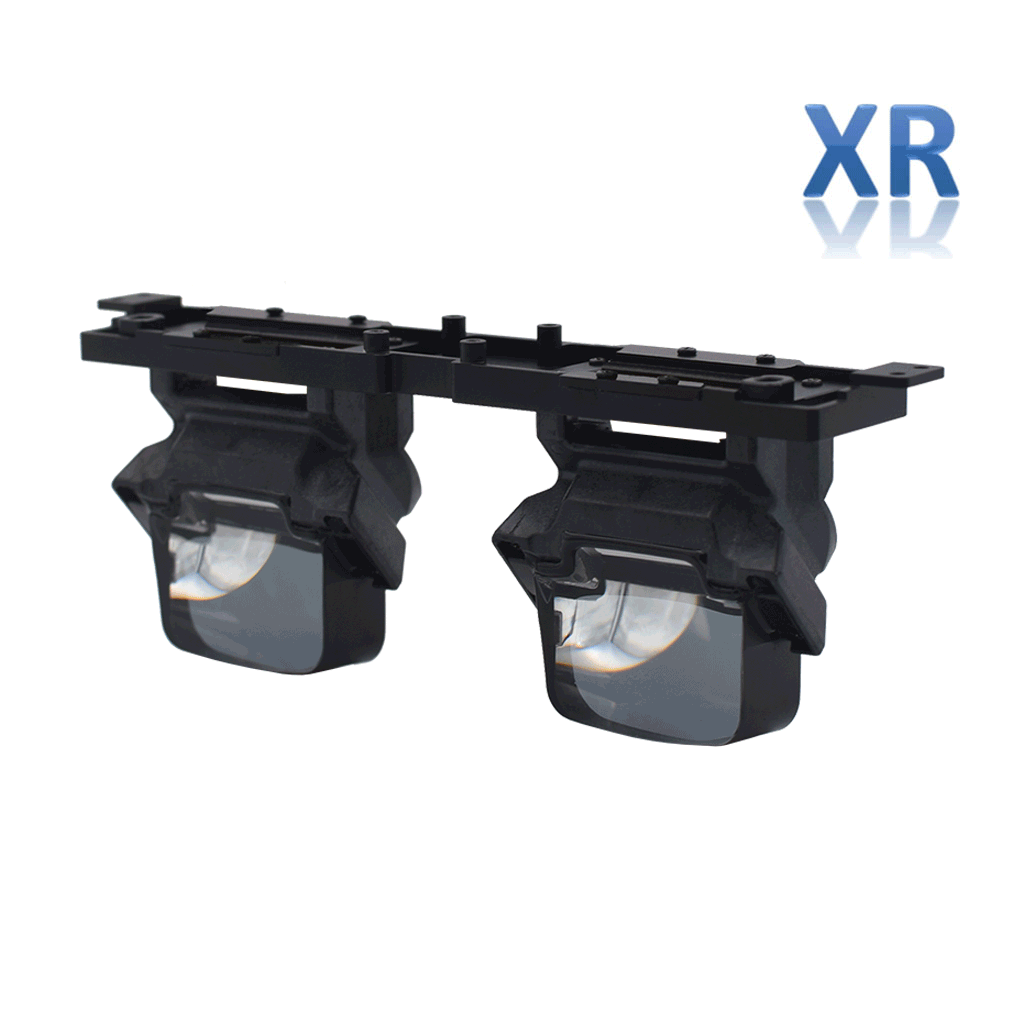
What is FOV, Exit Pupil, and Eye Relief?
Hello, today we are going to introduce some concepts of AR glasses.
You've probably heard of Field of View, Exit apple, Eye Relief. But do you really know that? Please follow us to have a look.
Field of View (FOV)
According to wikipedia, FOV (field of View) is the angular extent of what can be seen, either with the eye or with an optical instrument or camera.
Different audience groups have different requirements for FOV. For the mass consumer, the bigger the FOV, the more immersive the experience, and the better the experience of playing games and watching video. For business users, small-field AR glasses(such as 40° x 30°) are sufficient to meet the needs, and they are easy to maintain and overhaul. Because the focus area is small, other aspects are more important. For example, due to unobscured peripheral view, security has improved.

Figure:FOV comparison of human, VR and AR devices.
Note: none of the three are actually rectangles, but they are drawn as rectangles for simplicity.
Currently, AR displays on the market only cover a small portion of the human field of vision. Due to the simpler optical structure, VR displays are larger overall and cover a much larger FOV than AR displays.
Field of view, eye box size and eye relief (see below) are closely related through the (simplified) formula.
s = b + 2·r·tan(v/2)
Where s is the size of a planar optical surface, b is the eye box size, r is eye relief and v is the field of view. The following figure visualizes this relation.

Figure: Relation between optical surface size (s), eye relief (r), eye box size (b) and field of view (v).
Exit Pupil
In optics, the exit pupil is a virtual aperture in an optical system. Only rays which pass through this virtual aperture can exit the system.
In simple terms, it is the minimum diameter of light after leaving the optical device.
The size and shape of this disc is crucial to the instrument's performance, because the observer's eye can see light only if it passes through this tiny aperture.

Figure: The distance between the two arrows is the Exit Pupil
The red, blue and green lines are the light allowed to pass through the optical device.
Eye Relief
The eye relief of an optical instrument is the distance from the last surface of an eyepiece within which the user's eye can obtain the full viewing angle.
Simply speaking it is the supported distance from the pupil to the nearest point of the AR display.
If a viewer's eye is outside this distance, a reduced field of view will be obtained. The calculation of eye relief is complex, though generally, the higher the magnification and the larger the intended field-of-view, the shorter the eye relief. Since not all users have the same head shape, a certain range of eye relief needs to be supported in practice, thereby defining the thickness (along the viewing direction) of the eye box.
 Figure: Eye Relief(ER) is the distance between the pupil and the closest optical surface.
Figure: Eye Relief(ER) is the distance between the pupil and the closest optical surface.
For people who wear glasses, Eye Relief is particularly important. People with glasses need a longer Eye Relief so that they can still see the full field of vision through the eyepiece. Usually more than 15mm is appropriate. So ideally, Eye Relief should be large enough to support overlapping conventional myopia glasses. However, if you increase the eye distance, the cone of the eye box becomes thinner, so maintaining both the high eye distance and the large eye box can be challenging.
